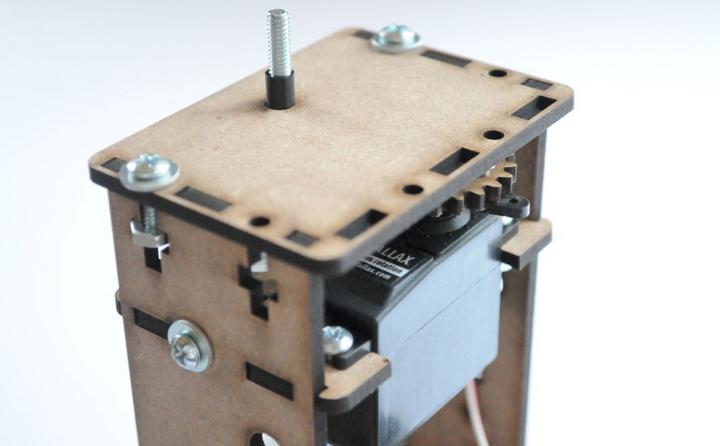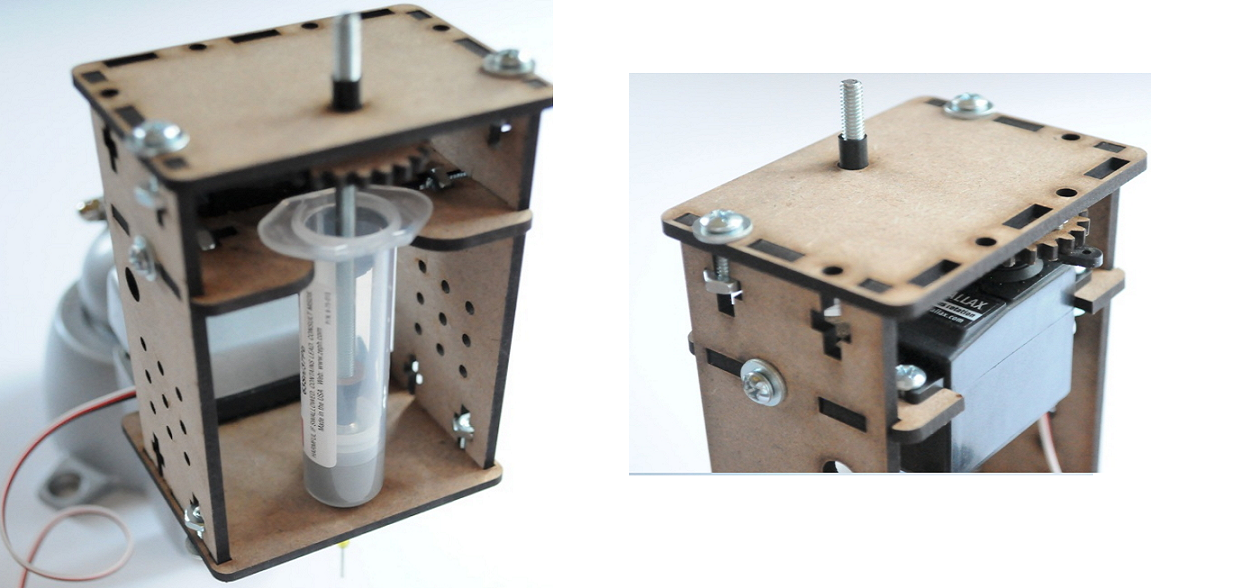Solder paste is often used in a screen-printing processes and the paste is deposited over a stainless steel or polyester mask to create the desired pattern on a printed circuit board. In commercial devices, the paste may be dispensed pneumatically, by “pin transfer” where a grid of critically-located pins dipped in solder paste is touched to the board, or by a jet printing process where the paste is sprayed on the substrate through nozzles.
It’s a delicate operation which has to function in tight quarters and with considerably accuracy.
 Peter Jansen, the founder of the the Tricorder project, is a PhD with experience in neural computation and cognitive modeling, and he’s also spent lots of time exploring circuit board design, fabrication, surface mount soldering, and large-scale project planning.
Peter Jansen, the founder of the the Tricorder project, is a PhD with experience in neural computation and cognitive modeling, and he’s also spent lots of time exploring circuit board design, fabrication, surface mount soldering, and large-scale project planning.
But the projects which appeal to him most are those that lie “far off the beaten path.”
Jansen says he and his father learned about 3D printing, and that led them to construct a pair of printers of their own design.
As result of that experience, he’s now built a prototype solder paste extruder which uses a standard syringe after spending lots of time manually dispensing the paste with varying results.
“I’ve been using the inexpensive solder paste stencils from places like OSH Stencils to really speed up the pasting process, as well as make it more repeatable and reliable,” Jansen says. “But as much as I refine my technique, I’m still not great at stenciling paste on larger boards that have lots of fine pitched components, on the order of 0.4mm to 0.5mm spacing. I find that after stenciling I’ll spend a good deal of time moving the paste around with fine tweezers to help prevent bridging (although often there are still bridges), and so I usually end up manually soldering fine pitch TQFP parts, which is very time consuming.”
 To take the inefficiencies and inaccuracy out of the process, he began looking for open source paste extruders on Thingiverse. After some research that led him to the fact that high-capacity commercial machines generally use pneumatics for solder paste extrusion, he sought a solution that didn’t require that level of complexity.
To take the inefficiencies and inaccuracy out of the process, he began looking for open source paste extruders on Thingiverse. After some research that led him to the fact that high-capacity commercial machines generally use pneumatics for solder paste extrusion, he sought a solution that didn’t require that level of complexity.
Jansen says a couple of common approaches to building open paste extruders were using a lead screw to press on the plunger, or using a belt attached to a vast system of gears which slowly press down on a syringe plunger.
“The prototype that I put together is more of a sketch in hardware to help me appreciate the issues of paste extrusion, and help hammer out a design,” Jansen says. “Instead of using a plunger, I’ve used a very long lead screw that acts as the plunger, and has a gear atop with a captive nut to transfer force. The gear is driven by a Parallax continuous rotation servo, which I thought I’d try given that it simplifies the design by having an integrated gear box (which gives it lots of torque), and it can be directly driven by a microcontroller rather than requiring a separate stepper driver.”
He says that some aspects of the design are very effective like easy access to and the ability to quickly change the syringe.
You can see all the details of Jansen’s solder paste extruder design on his website.
What do you think of Peter Jansen’s solder paste extruder design? Would this help you in your electronics projects? Let us known in the Solder Paste Extruder forum thread on 3DPB.com.
Subscribe to Our Email Newsletter
Stay up-to-date on all the latest news from the 3D printing industry and receive information and offers from third party vendors.
You May Also Like
Gorilla Sports GE’s First 3D Printed Titanium Cast
How do you help a gorilla with a broken arm? Sounds like the start of a bad joke a zookeeper might tell, but it’s an actual dilemma recently faced by...
Nylon 3D Printed Parts Made More Functional with Coatings & Colors
Parts 3D printed from polyamide (PA, Nylon) 12 using powder bed fusion (PBF) are a mainstay in the additive manufacturing (AM) industry. While post-finishing processes have improved the porosity of...
$25M to Back Sintavia’s Largest Expansion of Metal 3D Printing Capacity Since 2019
Sintavia, the digital manufacturing company specializing in mission-critical parts for strategic sectors, announced a $25 million investment to increase its production capacity, the largest expansion to its operations since 2019....
Velo3D Initiates Public Offering in a Bid to Strengthen Financial Foundations and Drive Future Growth
Velo3D (NYSE: VLD) has been among a number of publicly traded 3D printing firms that have attempted to weather the current macroeconomic climate. After posting a challenging financial report for 2023,...































